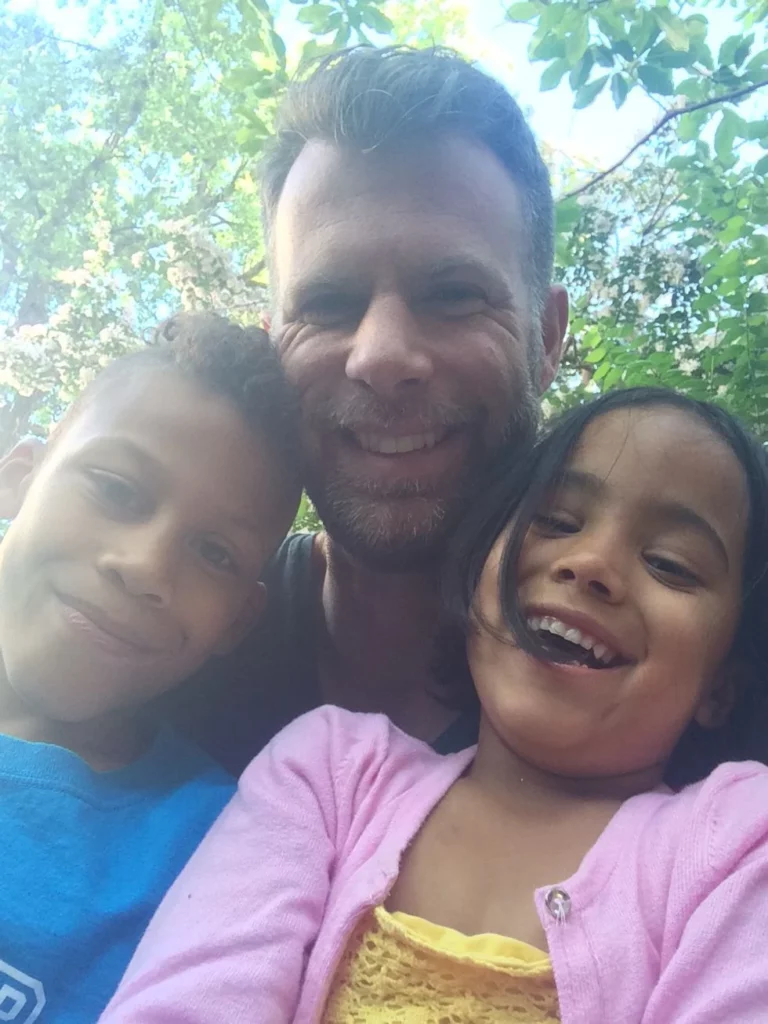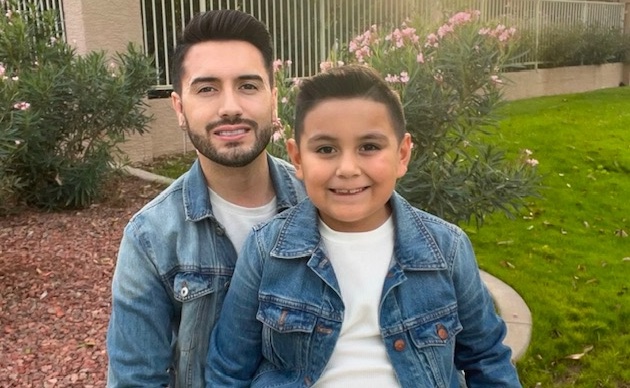I was putting on sunscreen the other morning while my daughter finished her breakfast. My son came into the kitchen and said, “it smells like sunscreen.” Matter-of-factly my daughter told him, “daddy’s putting it on because white people burn.”
My son identifies as black and my daughter as brown. My son, when he was seven, was thinking aloud about his biological brother who was adopted into another family: “we have the same hair, the same nose, the same lips, the same skin colour, but we live in different houses.”
My six year old daughter is perceptive – “just because we’re born in the same country doesn’t mean we’re the same colour” – but also questioning, “why am I the only brown girl in my ballet class?” When she asked that, I launched into a discussion about the intersectionalities of race, class and gender, but I soon realized I had to bring it down a few levels for now.
My partner and I are both white – he of Dutch heritage and me of English and Scottish descent. I have doubts about whether we’re raising our kids as best as we can. What can we teach our kids when we’re not a visible minority ourselves? We don’t know what it’s like to be perceived negatively because of our skin colour. We have privilege as white, middle class men. And we were raised in the 70s to believe that everyone is the same, rainbows are beautiful, and we’re all free to be you and me.
And yet as gay men we have our own history of feeling different, of being made to feel “other” or “less than,” of experiencing homophobia both personally and systemically. I feel we’re able to approach our parenting with experience of questioning norms, recognizing injustice, speaking out, building community and finding strength and resilience, all tools we can instill in or teach our children.
Every day I think about what we can and need to do:
When we adopted each child, we sought out books, tv shows, movies and other media that include diverse characters – characters of colour, two dads, strong female role models. It’s important for our kids to see themselves represented and reflected back to them. I grew up only with Three’s Company as a window into what it means to be gay when I was searching for identity, affirmation and connection. We’ve moved a bit further than those days, but only a bit if you don’t specifically search it out.

We’ve sought out books and resources about their cultural heritage and history. In addition to helping them learn, we make sure we’re educating ourselves too.
We work on building a community of family, friends, neighbours and resource people who nurture us and support us as a family.
We enrolled our children in a school that is diverse. Our daughter is far from the only brown girl in class; in fact, white kids are the minority. 85% of the school is Muslim, and the student body is made up mostly of immigrant families. They don’t simply learn about diversity, they experience it every day.
We’re fortunate to live in a large city with a diverse population. In fact, Toronto may be the most multicultural city in the world. We visit various neighbourhoods home to different nationalities and take them to annual summer festivals – our Caribbean, African Festivals, Pride festivals – to show them celebrations of diversity.
At home we talk about race, racism, discrimination, prejudice, justice and rights with our children. It can sometimes be difficult, like talking about slavery, the impact of Black Lives Matter, or the recent events in Charlottesville, but there’s no use being shy about it. On the contrary, we’d do them a disservice if we didn’t have these ongoing conversations.
We lead by example by living our lives openly, confidently and proudly.
All of this is a constant process, of course, as we learn and grow. The world around us is still learning and growing, sometimes painfully and fitfully. It is our responsibility, I feel, to educate and empower our children for the world we live in, not just the ideal world we wish to live in. We will stand with them, march with them, or take a knee or link arms, whatever it takes.






